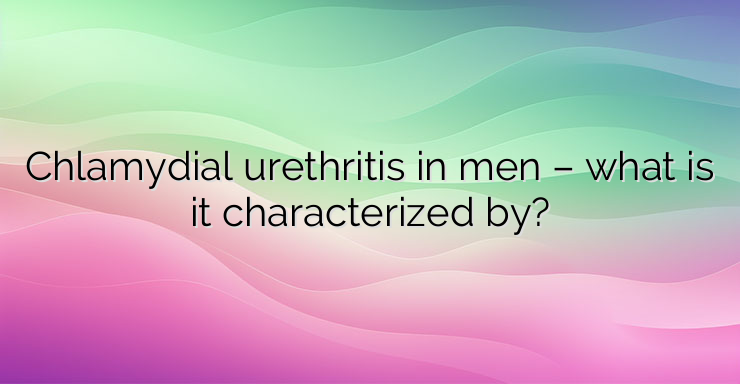What is chlamydial urethritis in men? Chlamydial urethritis in men is an infection of the urethra caused by chlamydia, which is sexually transmitted. The urethra is a waste channel that is involved in the removal of urine in the bladder outside the body. This condition often causes swelling and inflammation of the urethra, accompanied by discharge from the penis. But as with many STDs, men often have no symptoms. The infected person and all recent and current sexual partners should receive treatment to prevent re-infection. What are the causes of chlamydial urethritis? The bacterium Chlamydia trachomatis is the causative agent of chlamydial urethritis. Chlamydia is spread through oral, anal and vaginal sex. Both men and women can develop this common type of infection. People who have unprotected sex with multiple partners are more at risk of developing chlamydial urethritis than those who practice safe sex and are in a monogamous relationship. Sexually active people under the age of 25 are also more likely to contract STDs in general, including chlamydia. What are the symptoms of chlamydial urethritis in men? Men who have chlamydial urethritis may have no symptoms at all or may start showing symptoms only a few weeks after exposure to the pathogen. Symptoms of chlamydia and the associated inflammation of the urethra usually appear between one and three weeks after exposure to the bacteria. Signs of infection include: Pain or burning during urination; Itching, redness, or swelling of the glans penis or urethral opening; Discharge from the penis, which is usually yellowish or beige in color; Painful, swollen testicles The urethra becomes inflamed during an infection, making urination difficult. Discomfort in the penis is usually limited to its tip, where the opening of the urethra is. Symptoms of chlamydial urethritis in men can mimic the symptoms of gonorrhea. Gonorrhea and chlamydia infections often occur at the same time, and anyone infected may need treatment for both STDs. Bibliography: Centers for Disease Control and Prevention (CDC). Chlamydia Centers for Disease Control and Prevention (CDC). Chlamydial infections in adolescents and adults


Leave a Reply